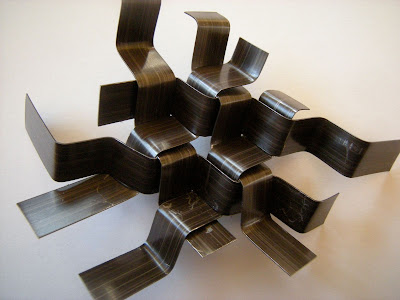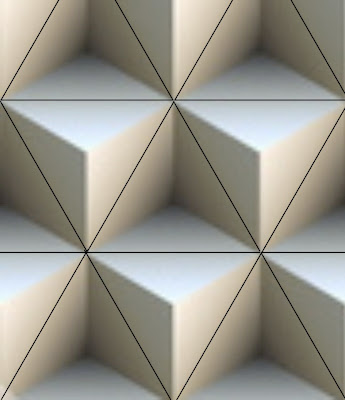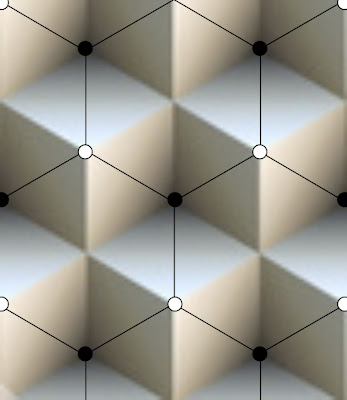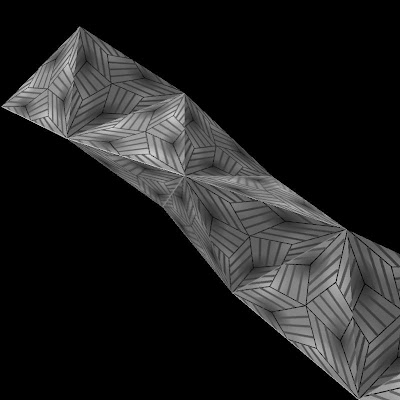
Rhombic tessellations, as for example in
anyam gila weaving, often create an illusion of stacked cubes. When the surface really does have that stacked-cube texture, as in some of Torolf Sauermann's
parametric sculptures, it can be realized by weaving elements that have 90-degree bends; for example, bent strips of sheet metal. The weaving pattern is not that of the challenging, double-layered anyam gila, but simply open triaxial weave. The geometry of the bends closes up the hexagonal openings.
I liken it to a truss because the interwoven bends stiffen the surface against bending, like corrugating sheet metal.
The bends can be preformed on a two-pin jig. The distance between the outside of the pins needs to be slightly wider than the strip. Here, 0.59" for 0.50" x .017" steel strapping.

The stacked cubes pattern implicitly defines a 2-colorable triangulation:

The dual of the triangulation is a bipartite trivalent map:

Starting from any given map, M, a bipartite trivalent map is defined by the map operation
bevel, Be(M). That new map describes a woven truss. The corresponding 2-colorable triangulation is given by Mt(M).
The weavers themselves follow along the edges of the medial of the triangulation, Me(Mt(M)), or, identically, Me(Be(M)).









